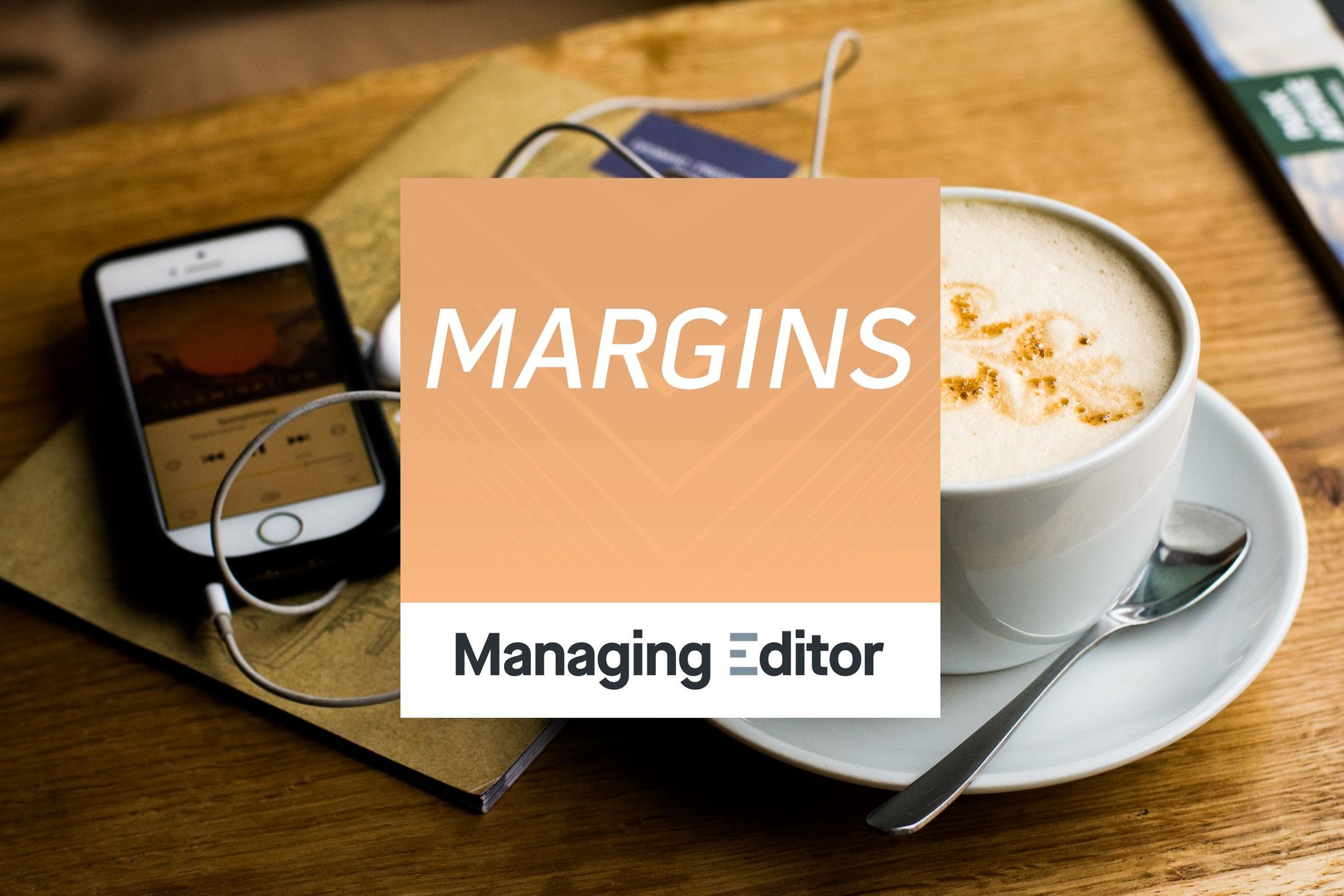During lockdown I went on a podcast binge, but unlike other forms of bingeing — looking at you Netflix and Whittakers — I came away feeling better for it.
I found podcasts that:
- Are made by others who share my niche analog interest (wood pencils)
- That helped me learn from peers sharing their experiences building a business
- Provided pure entertainment that fired up my imagination more than a true-crime story could have if I’d watched it as a TV documentary
And somewhere during those eight homebound weeks, I got curious about what kind of podcasts are being made especially for marketers.
That’s where I found Margins.

Margins is for anyone using content to solve business problems — and let’s face it, if you work in marketing or sales, content both solves and creates problems for you every damn day!
Showcase Workshop is sponsoring Season 3 of Margins and I wanted to kick off by highlighting my top 3 episodes from the back catalog:
Season 1, Episode 5: May I Have Your Attention, Please?
This episode is a year old, but the insights about understanding each other through video conferencing and the extra effort that's required to make working remotely successful couldn’t be more timely.
A tiny portion of the episode that stood out to me discussed the subject of emojis in business communication.
I very much have a foot in both camps about whether to punctuate text messages and/or use emojis. In an exit interview, a departing employee once told me (in the gentlest possible way) that my full stop usage often makes my correspondence seem aggressive and hard to interpret on channels like Slack.
Should she get over it? Or should I?
Guest Nick Morgan (not a millennial btw) had a perspective:
Emojis are, in effect, putting the emotions back in that virtual communications take out. So put in a smiley face. If you send the two-word email, 'great job', with a smiley face, [your colleague] will get it. They will not go into panic mode. Of course, people over a certain age think that emojis are silly or childish or beneath their dignity or not business-like, and so they're afraid to use it. So my call to those people is: get over it. Embrace the emojis, start using them, embrace GIFs, whatever it takes to put more emotions back into emails.
My takeaway: I can be on my high horse about emojis and punctuation or I can decide to make a small change that stands to improve the clarity, effectiveness, and efficiency of our communication. 😎
Season 1, Episode 2: Well, Actually…
Some of my favorite people are copywriters.
And some of those people have helped me wrangle thoughts that I couldn’t make clear with my own 10 fingers, keyboard, and brain cells.
Because the end result has ultimately given me additional clarity on my thoughts, I’ve questioned whether I truly can claim them as my own original ideas.
Inspired by a recent phone call, host Lee Price shares:
I asked a company CEO: "How do you think your industry is changing? Why are you interested in this work?" I was surprised by her answer: “Well, what would a thought leader say?”
I promise that CEO was not me.
But I have been through the discomfort that comes with asking a writer: “How can I say this in a way that makes a lot more sense?”
So if thought leadership is an aspiration of yours, the episode breaks it into two simple steps:
Step 1: Have thoughts.
Step 2: Be willing to share those thoughts, ideas, and perspectives. Be willing to have people disagree, think you're stupid, or maybe not care at all.
As a bonus, I offer to you Step 3: Find a copywriter willing to let you babble or bullet point your ideas and who has the smarts to roll that 💩 in glitter and create something wonderful from it!
Season 2, Episode 2: Getting Through the Creative Doldrums (How to Get Unstuck)
Even if you’re not a “creative” in the obvious sense, Showcase customers have to come up with new ideas on a frequent basis.
Times of stress - like a global pandemic and resulting lockdown - are definitely not the ideal breeding ground for abundant, high-quality idea generation. But for me, there was one activity that really helped when I was most stuck: going for a walk and getting some fresh air.
One problem though is that I often feel like that’s not “work time” and therefore I can only do it if I’m well ahead of my goals for the day.
Guest Jessica Holmes’ offered a helpful perspective on this feeling. I’m paraphrasing but: Think of fresh air as work time.
We’re quite hooked to the idea that being productive is limited to the times when we’re in front of a keyboard or sitting in a meeting. But if we need to generate ideas as part of our work and ideas come more easily while in motion, then we should not feel bad about that. Pop a Field Notes and a pencil in your pocket and lace-up for 30 minutes.
Header image: by Austin Distel on Unsplash